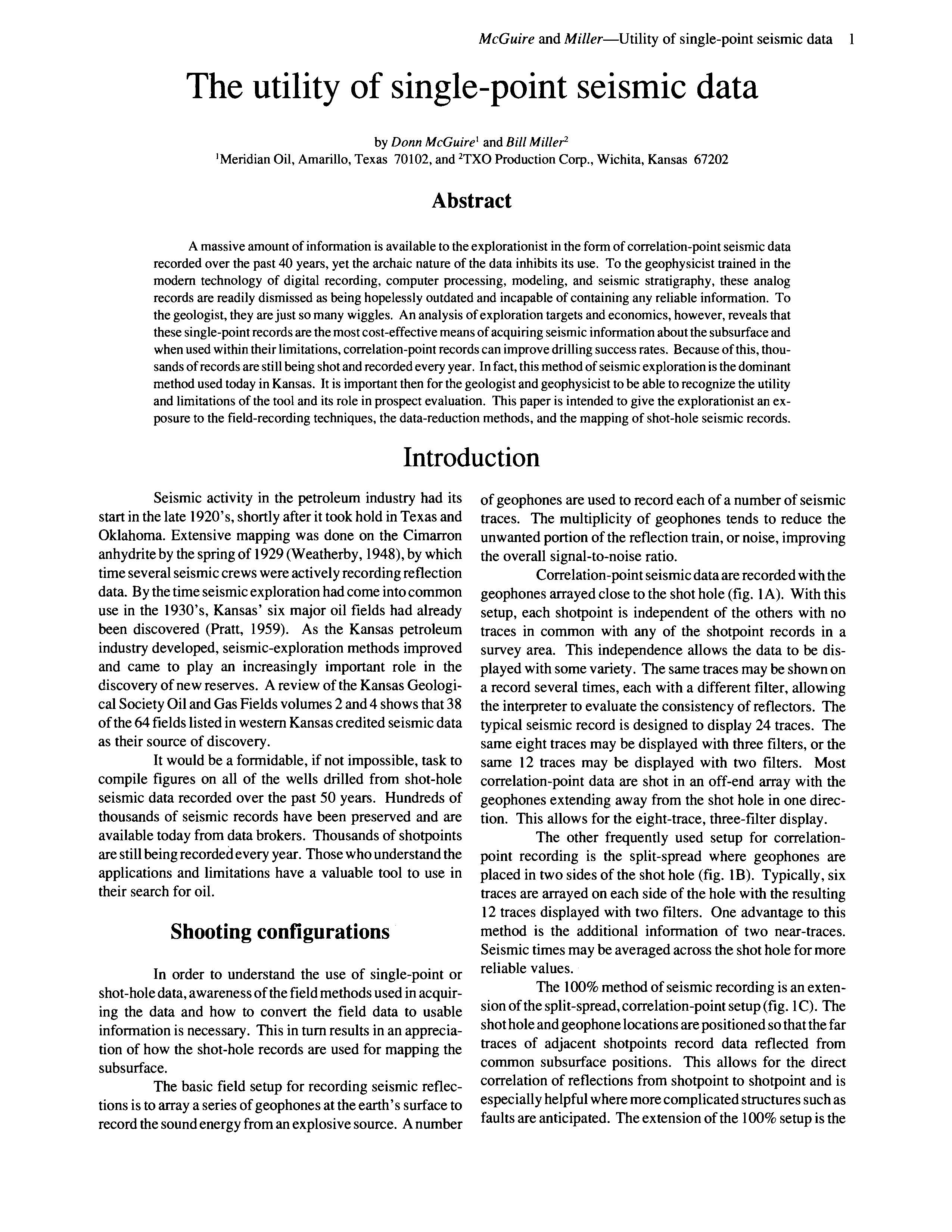The utility of single-point seismic data
DOI:
https://doi.org/10.17161/kgsbulletin.no.226.20491Abstract
A massive amount of information is available to the explorationist in the form of correlation-point seismic data recorded over the past 40 years, yet the archaic nature of the data inhibits its use. To the geophysicist trained in the modem technology of digital recording, computer processing, modeling, and seismic stratigraphy, these analog records are readily dismissed as being hopelessly outdated and incapable of containing any reliable information. To the geologist, they are just so many wiggles. An analysis of exploration targets and economics, however, reveals that these single-point records are the most cost-effective means of acquiring seismic information about the subsurface and when used within their limitations, correlation-point records can improve drilling success rates. Because of this, thousands of records are still being shot and recorded every year. In fact, this method of seismic exploration is the dominant method used today in Kansas. It is important then for the geologist and geophysicist to be able to recognize the utility and limitations of the tool and its role in prospect evaluation. This paper is intended to give the explorationist an exposure to the field-recording techniques, the data-reduction methods, and the mapping of shot-hole seismic records.
Downloads

